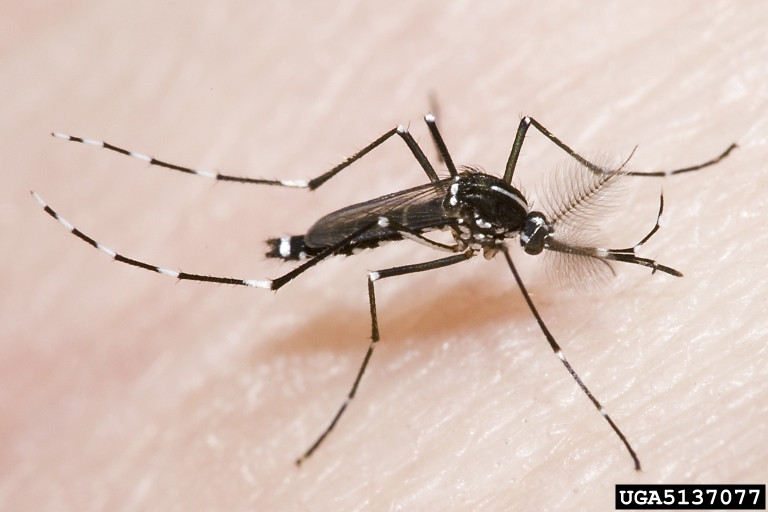
by Mary Salinas | Nov 9, 2015
Are you plagued with mosquitoes in your yard? Does it seem like you have a greater infestation than your neighbors? There may be some solutions to solve the problem other than using pesticides that negatively impact beneficial insects in your landscape.
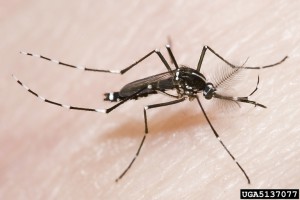
Asian tiger mosquito. Photo credit: Susan Ellis, Bugwood.org.
Mosquitoes are not only annoying, they can transmit serious diseases such as: eastern equine encephalitis, dengue fever, dog or cat heartworm, chikungunya, malaria, St. Louis encephalitis and west Nile virus.
Let’s first explore what kind of environment in your landscape and around your home is friendly to the proliferation of mosquitos. Adult mosquitoes lay their eggs on or very near water that is still or stagnant. That is because the larvae live in the water but have to come to the surface regularly to breeze. The small delicate larvae need the water surface to be still in order to surface and breathe. Water that is continually moving or flowing inhibits mosquito populations.
Look around your home and landscape for these possible sites of still water that can be excellent mosquito breeding grounds:
- bird baths
- potted plant saucers
- pet dishes
- old tires
- ponds
- roof gutters
- tarps over boats or recreational vehicles
- rain barrels (screen mesh over the opening will prevent females from laying their eggs)
- bromeliads (they hold water in their central cup or leaf axils)
- any other structure that will hold even a small amount of water (I even had them on a heating mat in a greenhouse that had very shallow puddles of water!)
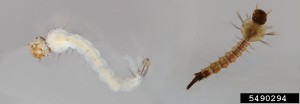
Mosquito larvae. Photo credit: Ari Farajollahi, Bugwood.org.
You may want to rid yourself of some of these sources of standing water or empty them every three to four days. What if you have bromeliads, a pond or some other standing water and you want to keep them and yet control mosquitoes? There is an environmentally responsible solution. Some bacteria, Bacillus thuringiensis ssp. israelensis or Bacillus sphaericus, only infects mosquitoes and other close relatives like gnats and blackflies and is harmless to all other organisms. Look for products on the market that contain this bacteria.
For more information:
UF/IFAS Mosquito Information Website
Biological Control of Mosquitoes
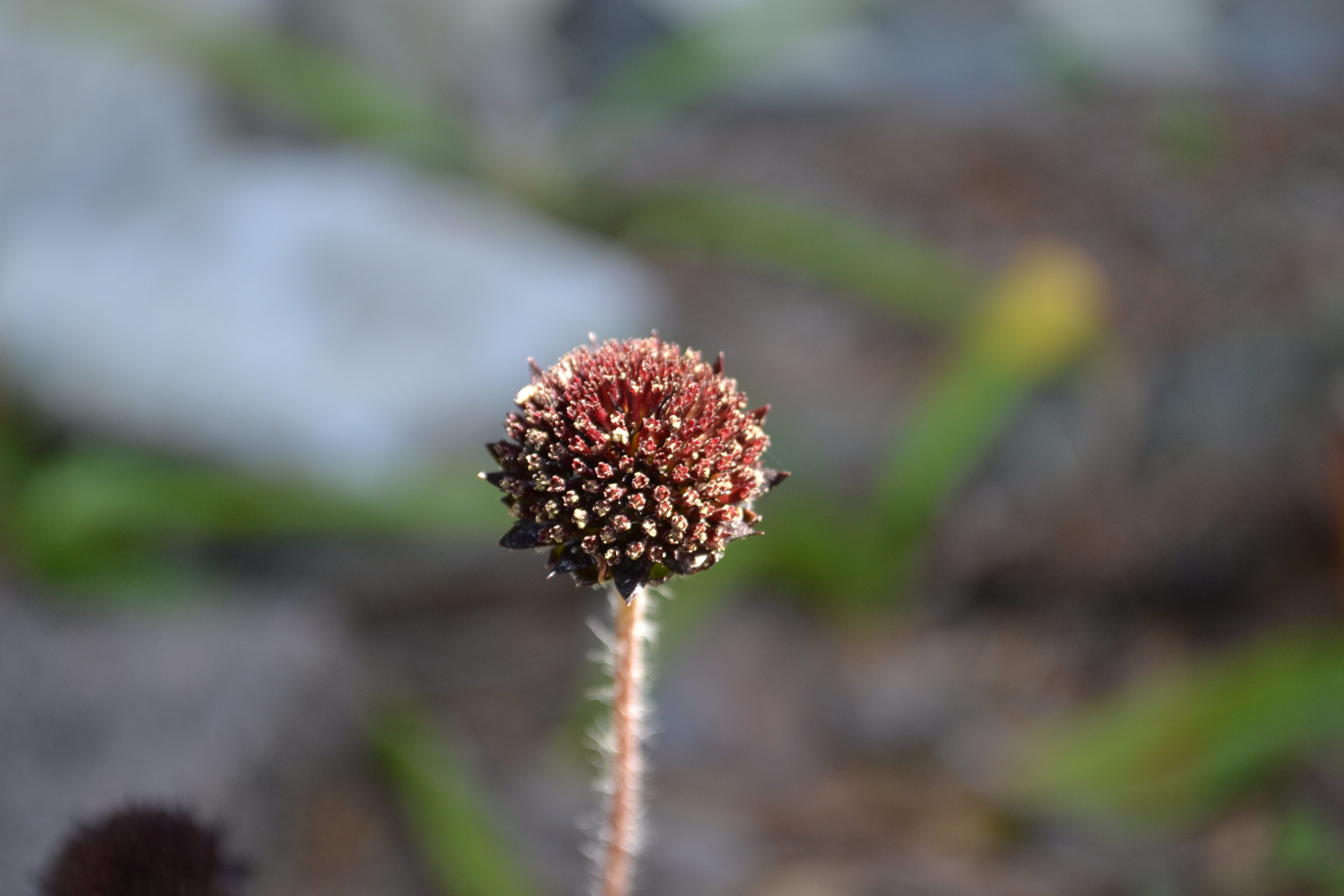
by Beth Bolles | Oct 27, 2015
Fall is a wonderful season for viewing wildflowers and there are many flower colors brightening our landscapes and roadsides. Amongst all the color there is one wildflower, the Rayless sunflower (Helianthus radula) that may not be nearly as showy but is very interesting in the landscape.
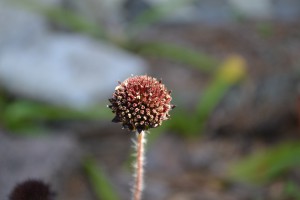
Flower heads have disk flowers but no rays. Photo by Beth Bolles
Many people will discover the Rayless sunflower in a moist area near the ditch or a drainage area. It has a basal set of leaves that blend into the surrounding grass. In summer a leafless stem about will emerge that is topped by a round flower with discs but no rays. It mostly appears brown but may offer a tinge of red or purple from the disc flowers.
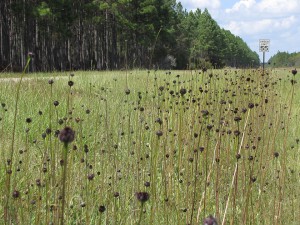
Rayless sunflower in mass. Photo by Jeff Norcini
Not everyone will appreciate the beauty of the rayless sunflower. It will be visited by pollinators and offers an attractive contrast to the greens of surrounding plant material. It is a plant suited to its preferred habitat and an understated treasure among native wildflowers.
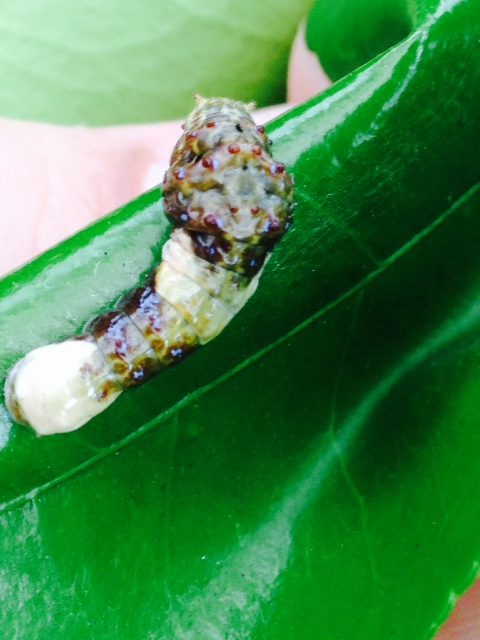
by Julie McConnell | Sep 29, 2015
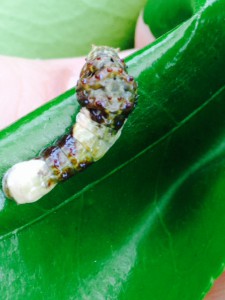
Giant Swallowtail on citrus leaf. JMcConnell, UF/IFAS
Adult butterflies are pretty easy to attract to your landscape if you provide flowering plants, but getting them to lay eggs in your garden is a little trickier.
Butterflies go through complete metamorphosis which means that they have four main life stages. The first is the egg, second they hatch into caterpillars (larvae) which feed and molt many times, the third stage is the pupa or chrysalis, and finally they emerge as colorful adults. Complete metamorphosis is considered a more advanced life cycle than incomplete and one of the reasons is because most insects that go through this process do not compete for food at different life cycles. For example, the gulf fritillary butterfly larvae needs passionflower (Passiflora spp.) to feed on – no other plant type will do. The adults visit many flowering landscape plants such as zinnias, butterfly bush, pentas, etc. The adults are feeding on nectar while the caterpillars are eating foliage.
Because the larvae are very host specific, you must offer the correct plant to attract particular butterflies. Luckily, we have many options in the Florida panhandle! Just remember if you would like to attract butterfly breeding to your yard, you must sacrifice some foliage to support the caterpillars.
• Gulf Fritillary – Passionflower
• Monarch – Native milkweed
• Giant Swallowtail – citrus
• Eastern Black Swallowtail – plants in the carrot family including dill, celery, fennel, and parsley
• Tiger Swallowtail – sweet bay magnolia, tulip poplar, black cherry
• Zebra Swallowtail – pawpaw
• Luna Moth – walnut, hickory, sweetgum, persimmon, winged sumac
If you would like to know more about individual butterfly species please visit UF/IFAS Entomology & Nematology’s Featured Creatures website.
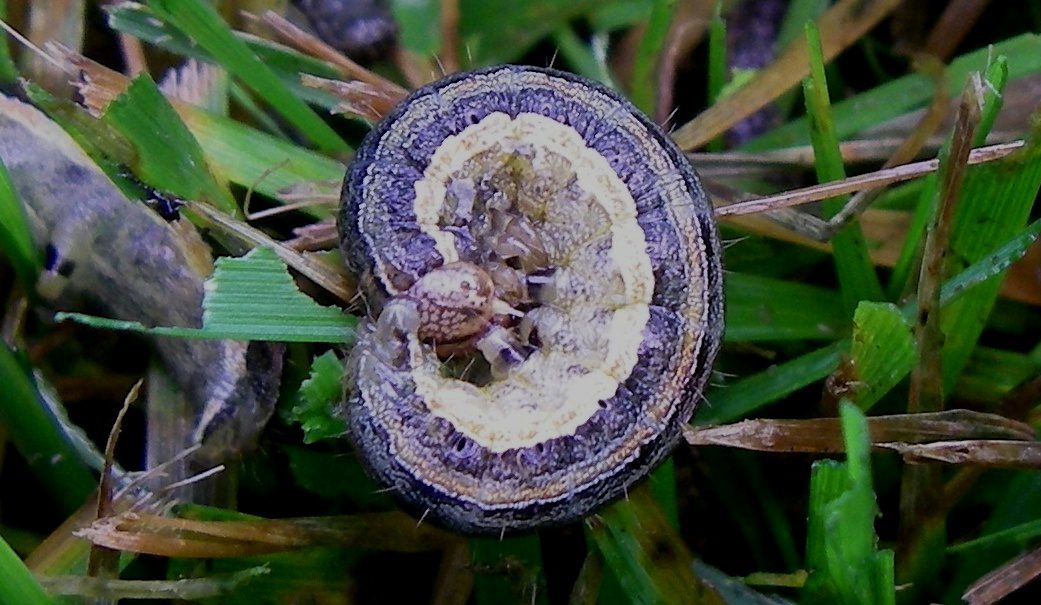
by Matt Lollar | Sep 23, 2015
Armyworms come in a wide range of colors and sizes. A few of the prominent species living in Florida are beet, southern, and fall armyworms. And the term “living” is not an exaggeration, because Florida is one of the lucky states where it is warm enough for armyworms to overwinter. They are the snowbirds that never leave!
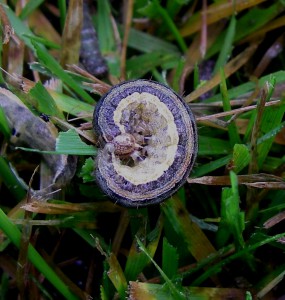
Armyworm damage on a lawn. Credit: Purdue University
Armyworms are notorious for unanticipated invasions. They feed on most turfgrass species and most vegetable crops, but they prefer grassy vegetable crops such as corn. Armyworms feed in large groups and their feeding has been described as “ground moving” in lawns. They feed during cooler times of the day (morning and evening) and they roll up and rest under the vegetative canopy (in the thatch layer in turf and in the base of leaves in vegetables) during the heat of the day.
Armyworms are difficult to control because of their spontaneity. However, in the lawn they hide in the thatch during the heat of the day. Over watering and fertilization can increase the amount of thatch. It is important to follow UF/IFAS guidelines for home lawn management. A good weed control program can also help to deter armyworms, because weeds serve as an alternate food source.
Numerous chemical control options are available, but softer chemicals such as horticultural oils and insecticides containing the bacteria Bacillus thuringiensis are recommended as a first line of defense. Insecticides should be applied in the morning or evening during feeding time. For additional control strategies and basic information please visit the UF/IFAS Armyworm Publication Page.
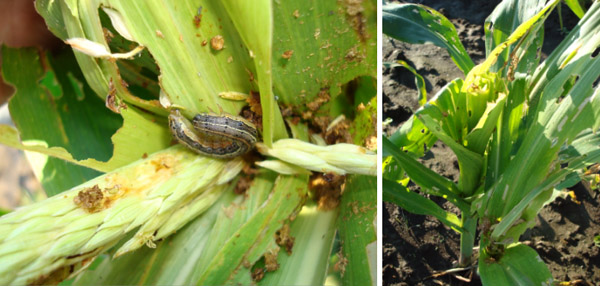
Armyworm feeding on a young corn plant. Credit: University of Illinois
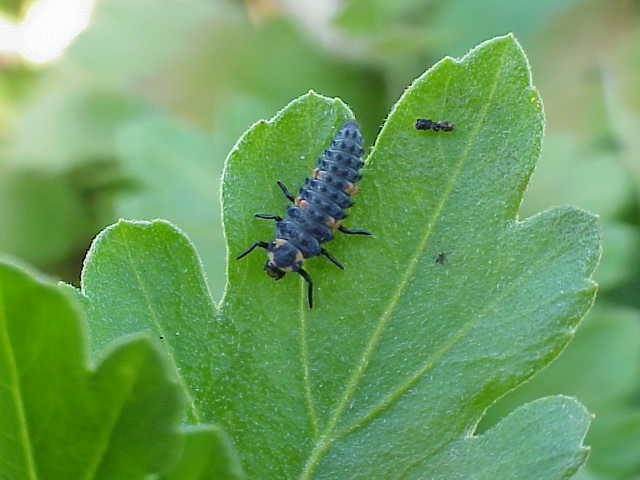
by Beth Bolles | Aug 26, 2015
It would seem that landscapes are filled with pests ready to devour our favorite plants. We can often see evidence of pest damage in the form of leaf curls, stippled leaves, or chewed holes in foliage. How do plants survive with all the pest threats without intervention from people?
Many plants have their own alert system to help manage a plant-feeding insect attack. When tissues are damaged by plant feeders, the plant releases volatile chemicals that serve as signals for many beneficial insects. Predators such as lady beetles, lacewings, and predatory bugs ‘pick up’ the chemical signals and fly to the injured plants to find their prey.
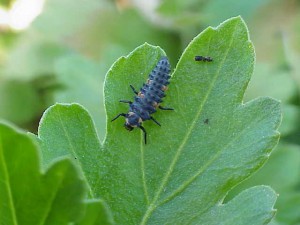
Ladybeetle larvae will eat many soft-bodied pests.
An interesting part of this occurrence is that the release of chemicals by one plant can stimulate other surrounding plants to build up their chemical defenses against future pest feeding.
The key lesson for all gardeners is that there are many natural processes going on without our knowledge. Instead of immediately applying a broad-spectrum insecticide at the earliest sign of pest feeding on a plant, give the predators a chance to provide you with a free and environmentally sound form of pest control.

by Julie McConnell | Jul 27, 2015

Deer are known to eat daylilies in the landscape. To prevent browsing, choose other plants or create a barrier with deer fencing.
Any seasoned gardener knows that even a well maintained garden will eventually face a pest issue. Pests come in all shapes and sizes and may include weeds, disease, insects, moles, rabbits, birds, and deer. Although some gardeners may invite wildlife into their gardens when that adorable deer eats your prized hydrangea it tends to lose the cuteness factor.
Regardless of what type of pest issue you are facing, the only way to establish a successful control program is to correctly identify and understand some basic things about the pest. Incorrect assumptions or misidentification can lead to taking the wrong action and may even cause more harm to plants.
Some things to know about your pest (after identification):
- Preferred host or target plant – diversify landscapes to minimize susceptibility to each pest.
- Feeding/damage caused – is it just aesthetic or will it cause long-term harm?
- For rapidly reproducing pests such as insects or fungi, what is the timing of new generations? For example, if you eliminate adult insects expect that eggs are waiting to hatch – you need to know when to retreat.
- What natural enemies might help reduce populations and how can they be preserved?
- Be sure to match control methods with pest behavior and activity. For example, if you want to use an insecticidal soap on azalea lace but you need to know that they feed from the underside of the leaf in order to properly coat them with the product.
Take the time to get to know the pest in your backyard and management efforts will be much more effective. For help with identification and control, contact your local extension office.














